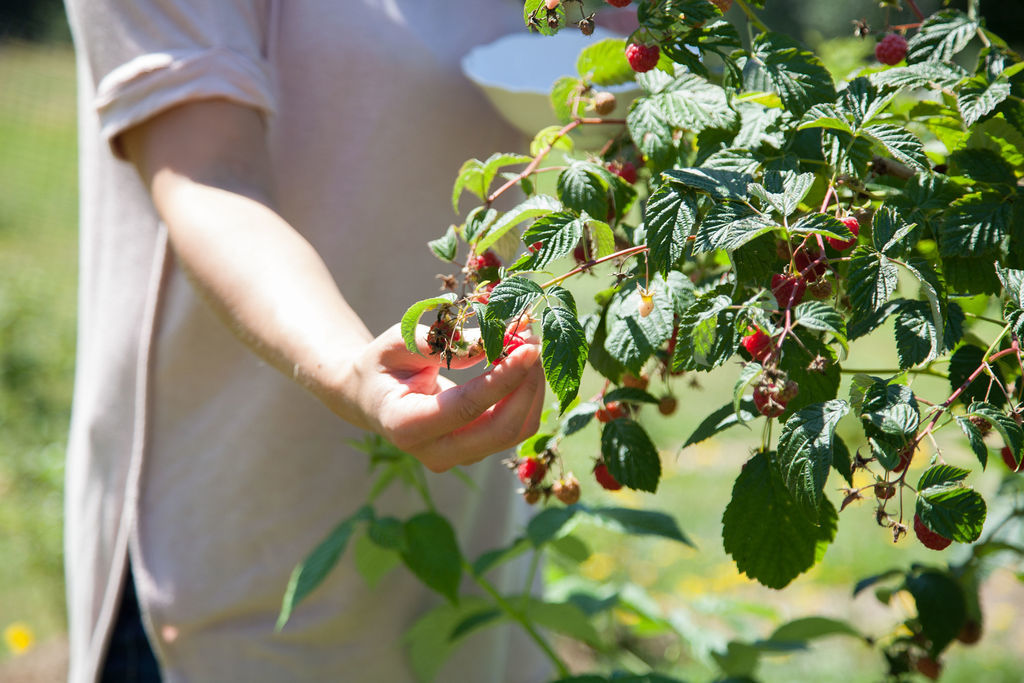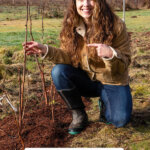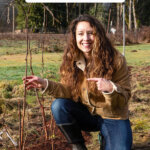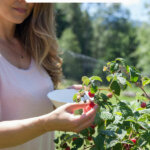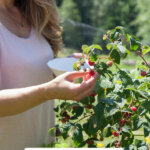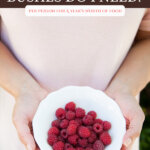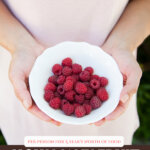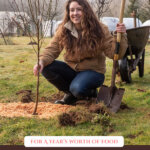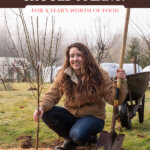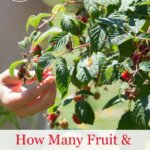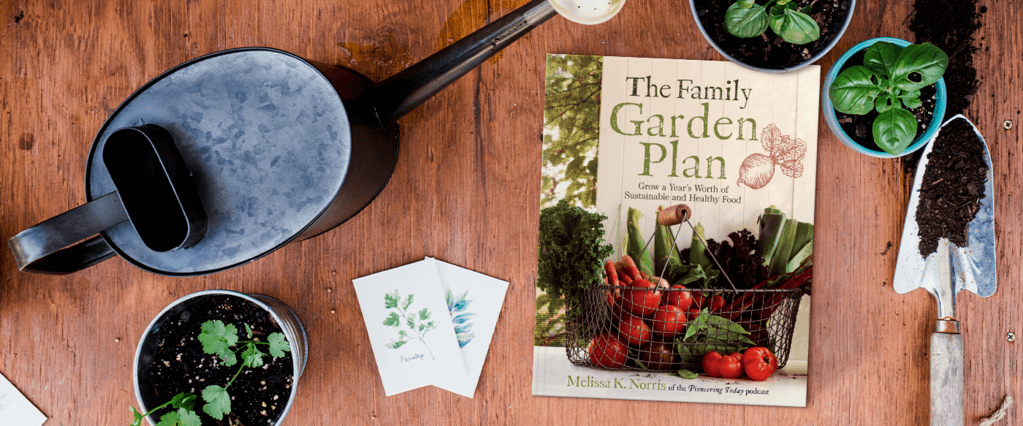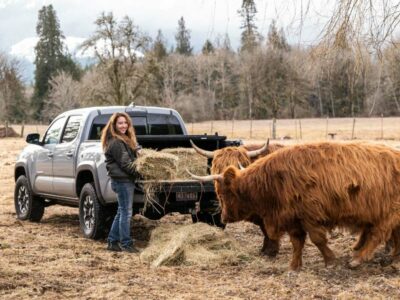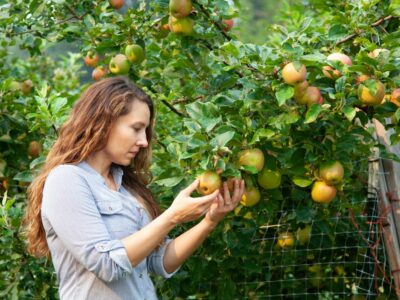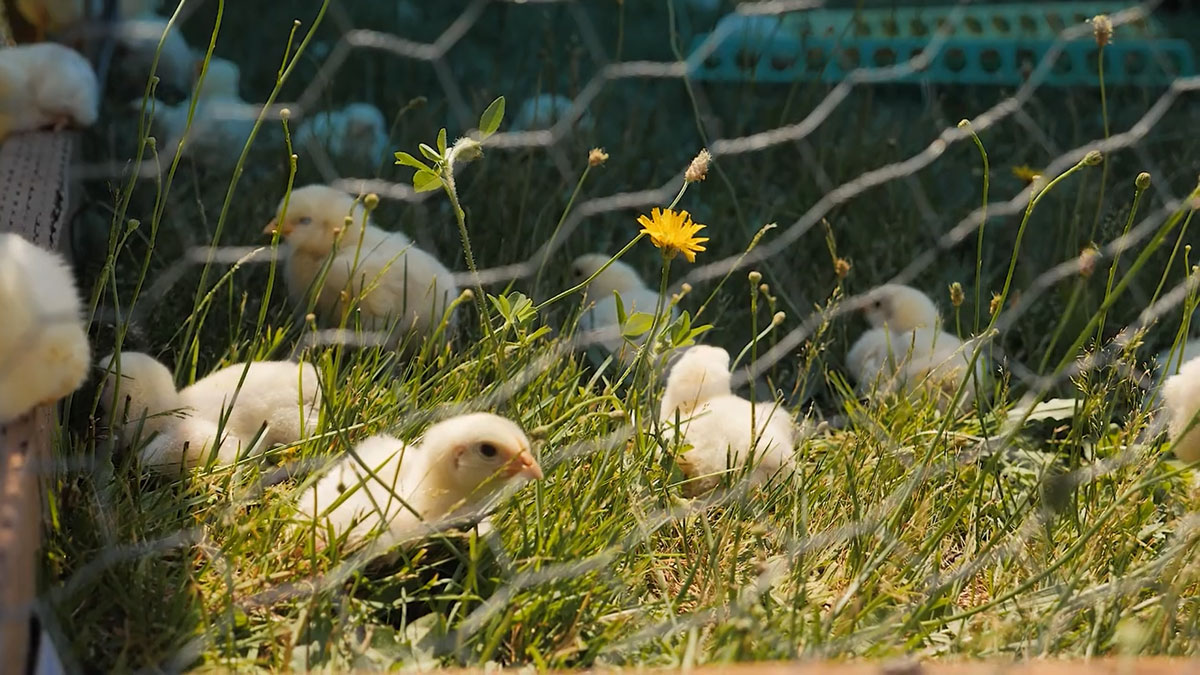Learn how many fruit trees and berry plants you need to plant per person for a year's worth of food. Plus all the details you need to know to make this decision including variety and the average yield of each plant and tips for picking the best varieties based on your space and climate.
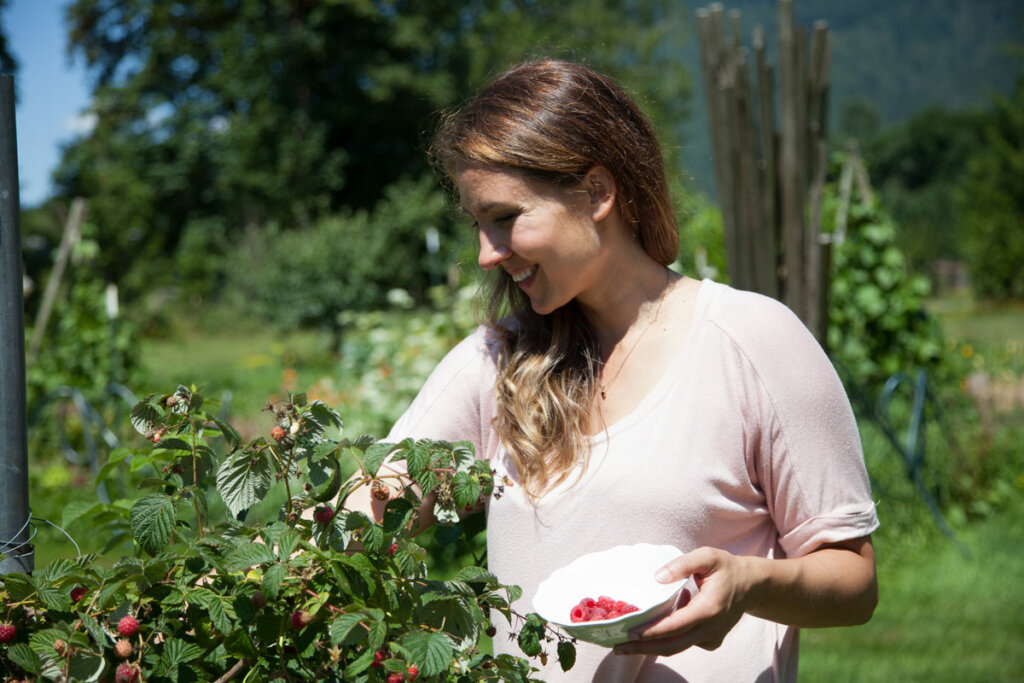
How many fruit & berry plants per person for a year's worth of food do you need to plant?
Oftentimes there isn't a lot of focus on how many fruit trees or berry plants to put into the garden in order to feed your family for a full year. The focus is typically on annual vegetables. That's why I'm going to walk you through figuring out how many fruit trees and berry plants you need and the details you need to know to make this decision. There are a lot of factors when it comes to growing your own fruit so we're going to tackle that today.
Listen to the full podcast, Episode #230 How Many Fruit & Berry Plants Per Person for a Year's Worth of Food of the Pioneering Today Podcast, where we don’t just inspire you, but give you the clear steps to create the homegrown garden, pantry, kitchen, and life you want for your family and homestead.
For more tips you'll want to know before planting an orchard, listen in on this live coaching call about orchard planning to keep pests out.
Benefits of Planting Berry Bushes and Fruit Trees
One of the benefits of fruit trees, more so than some of your berry plants, is that they are perennials. That means we plant once and year after year after year it provides us with fruit without us ever having to seed start or plant it again. Now, that's assuming the right variety was chosen and that it was put in the right spot when planted.
How Long Until Fruit Trees Produce Fruit?
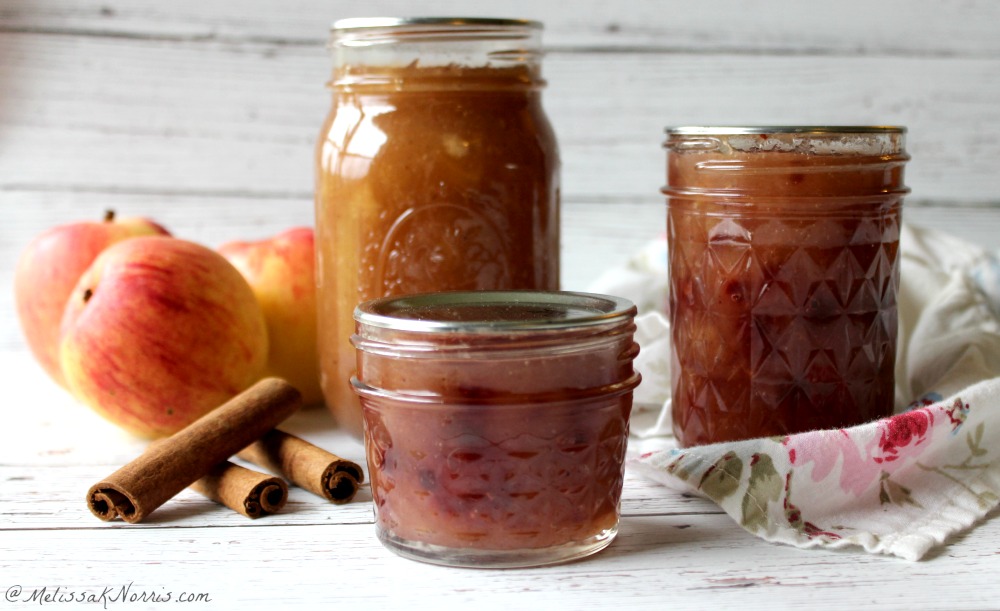
Many fruit trees can take up to seven years before they actually start to produce a good harvest. So with fruit trees the sooner you get them planted, the better off you are and the closer you are to getting a harvest from them.
How Long Until Berry Plants Produce Fruit?
When it comes to planting fruit bushes, aka berry plants, you may get fruit the first year with certain varieties. For example, if you plant raspberries in the spring and they are an ever-bearing variety that produces an autumn crop, then you'll be able to harvest berries that first year in the fall.
Other berry types, like blueberries and elderberries, will take two to three years before you really start to get a good harvest from them. Typically, your berries will give you a harvest faster than you'll get from a fruit tree.
Watch my video below for the best berry plants to grow to get fruit the VERY first year you plant them!
Types and Sizes of Fruit Trees
But, first, let's talk about the different sizes and types. There are three sizes of fruit trees to choose from:
- Dwarf & Miniature
- Semi-Dwarf
- Standard
Dwarf and Miniature
These are the smallest and most compact fruit trees. They usually get between 8 to 10 feet tall and wide upon maturity. The size of the fruit is not dwarf, just the size of the tree.
Benefits of a Dwarf Fruit Tree
- The good thing about a dwarf tree is they sometimes produce fruit sooner than their larger counterparts. Possibly within as little as two years, similar to berries.
- They are excellent candidates for growing in containers.
- You don't need a ladder, so there's no climbing. They don't get super tall.
- They're easier to prune and maintain.
Cons of a Dwarf Fruit Tree
- They have a shorter life span, usually 15 to 25 years versus the standard variety, which is 50 years plus.
- Smaller harvest. Not because the fruit is smaller, but because the tree is smaller meaning there isn't as much fruit to harvest from it as you would get from a semi-dwarf or standard variety.
Semi-Dwarf
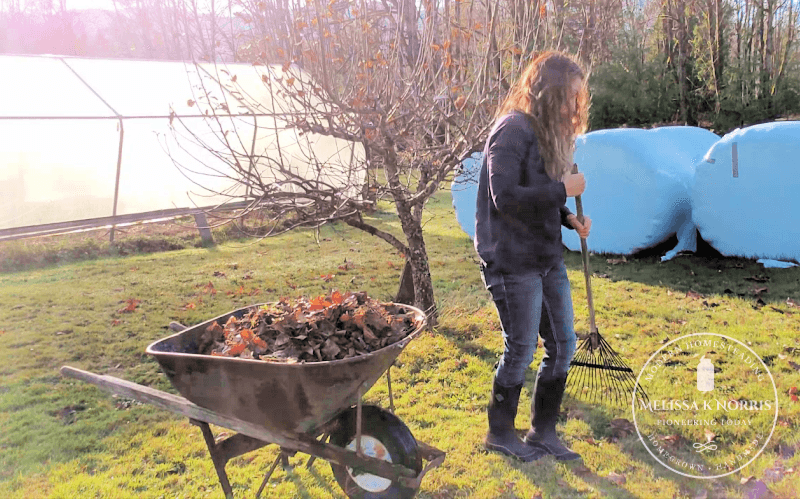
Semi-Dwarf trees are right in the middle and grow 12 to 15 feet tall and wide. This depends upon the root stock. Some may get a little bit taller, closer to 18 and 20 feet, but on average, upon maturity, you might need a ladder to harvest at the very top of the tree. Semi-dwarf is what we have on our homestead.
Benefits of a Semi-Dwarf Fruit Tree
- Can be grown in containers.
- Provides fruit faster than the standard variety.
- Depending on the variety, you can get double to triple the harvest you would get from a dwarf tree.
- They'll get large enough to provide shade during really hot times of the year.
Cons of a Semi-Dwarf Fruit Tree
- Smaller harvest than a standard variety.
- Shorter lifespan than a standard variety of fruit tree.
- Requires a ladder to reach the top of the tree for harvest and pruning.
Standard
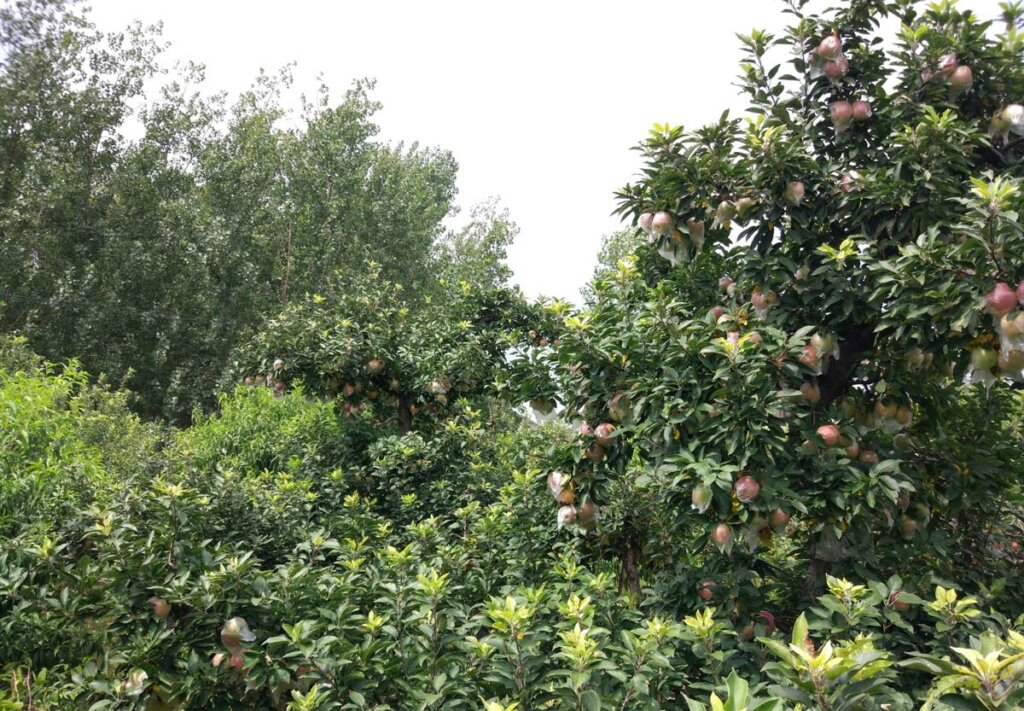
Standard trees are the big boys. They can reach beyond 25 feet tall at maturity. My parents have apple trees on their property that are over 60 years old that are still producing fruit with very little pruning. They are quite sprawling since they haven't been pruned in a number of years, but they are still producing pretty decently. My neighbor has an old standard apple tree that has fallen over in the middle of their field and it still produces fruit, even completely laying on the ground. Pretty impressive for something that was planted half a lifetime ago.
Benefits of a Standard Fruit Tree
- Large harvest so you'll get plenty for fresh eating, preserving, for selling, and sharing.
- They have a long lifespan upwards of 50 years in many cases.
- They can provide a lot of shade.
Cons of a Standard Fruit Tree
- It takes a few more years longer for the tree to produce a harvest.
- Definitely requires more space per tree. You'll likely need to have some acreage if you plan on having multiple varieties. Nor do you want them too close to building and structures.
- And you'll definitely need a ladder for harvest and pruning on mature standard-sized trees.
Fruit and Berry Yield
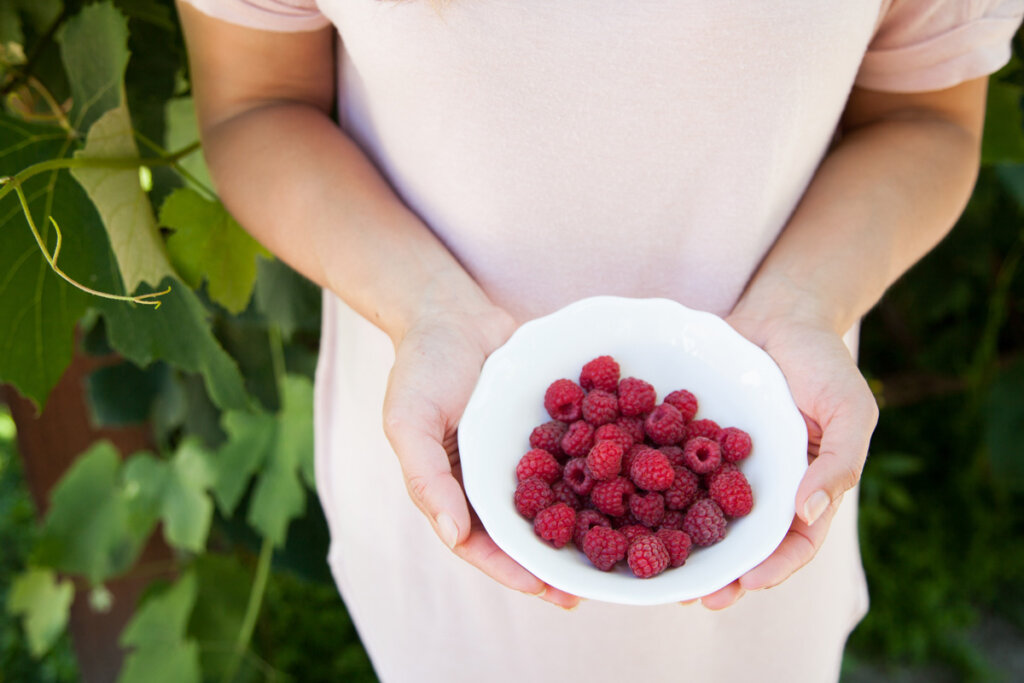
Keep in mind that all the information I'm sharing are averages. There are several factors that affect fruit production. These factors are:
- Variety planted
- Climate
- Location planted
- Whether they have good drainage or not
- The amount of sun they're getting (most require six or more hours of sunlight)
- The amount of rainfall
However, these averages will give you a good reference and starting point.
When referring to the average yield per fruit tree, it's in bushels and pecks. When it comes to berries, it's in gallons. Don't know what that all means? Let me lay it out for you:
Looking at the graph below, starting at the bottom row, right side:
- 2 cups = 1 pint
- 4 cups or 2 pints = 1 quart
- 16 cups, 8 pints, or 4 quarts = 1 gallon
- 32 cups, 16 pints, 8 quarts, or 2 gallons = 1 peck
- 128 cups, 64 pints, 32 quarts, 8 gallons, or 4 pecks = 1 bushel
| Volume | |||||
| Peck | Gallon | Quart | Pint | Cups | |
| Bushel | 4 | 8 | 32 | 64 | 128 |
| Peck | 2 | 8 | 16 | 32 | |
| Gallon | 4 | 8 | 16 | ||
| Quart | 2 | 4 | |||
| Pint | 2 |
Fruit Trees
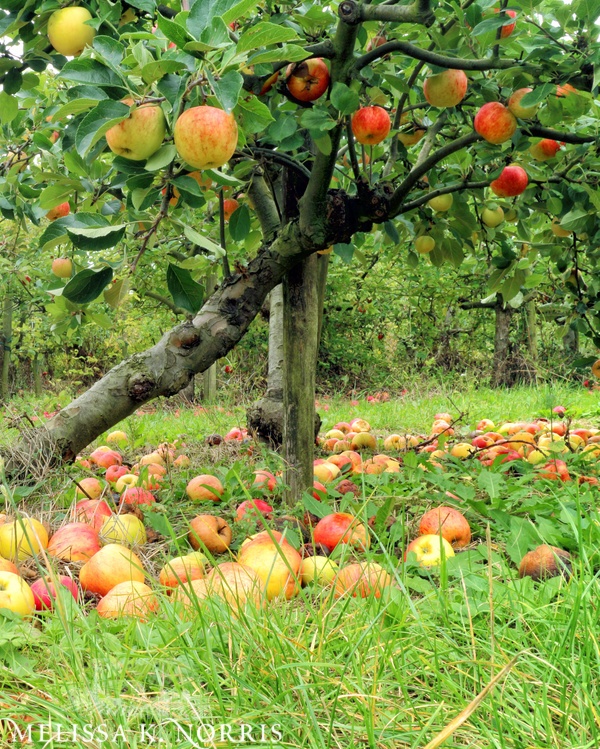
Now that we have our quantities explained, let's dive into how many fruit trees are needed, per person, to grow a year's worth of food?
NOTE: The following averages are for one mature fruit tree for each type of fruit listed. Trees that aren't mature will yield a lower harvest.
Apple
- Dwarf: 5 to 6 bushels
- Semi-Dwarf: 10 to 15 bushels
- Standard: Anywhere from 5 to 20 bushels
Apricot
- Dwarf: 1 to 2 pecks
- Semi-Dwarf: 1 to 2 bushels
- Standard: 3 to 4 bushels
Cherry, Sweet
- Dwarf: 8 to 10 gallons
- Semi-Dwarf: 10 to 15 gallons
- Standard: 15 to 20 gallons
Cherry, Sour (aka Tart or Pie Cherry)
- Dwarf: 3 to 5 gallons
- Semi-Dwarf: 12 to 18 gallons
Nectarines
- Miniature: 1 to 2 pecks
- Dwarf: 3 to 4 bushels
- Standard: 6 to 10 bushels
Peach
- Miniature: 1 to 2 pecks
- Dwarf: 3 to 4 bushels
- Standard: 6 to 10 bushels
Pears
- Dwarf: 6 to 8 bushels
- Standard: 12 to 15 bushels
Plum, European
- Dwarf: 1 to 1 ½ bushels
- Standard: 1 to 2 bushels
Plum, Japanese
- Dwarf: 3 to 4 bushels
- Semi-Dwarf: 4 to 5 bushels
- Standard: 5 to 6 bushels
In reviewing these, you can really tell that based on the type of tree the actual production can vary greatly. For example, the difference between the dwarf and standard apple tree is a big difference, from six bushels for the dwarf to 20 bushels for the standard. But when you look at the Japanese plum the difference is really only two to three bushels difference.
What you need to do now, is calculate how many bushels your family will consume of each variety of fruit.
Storing & Preserving Fruit
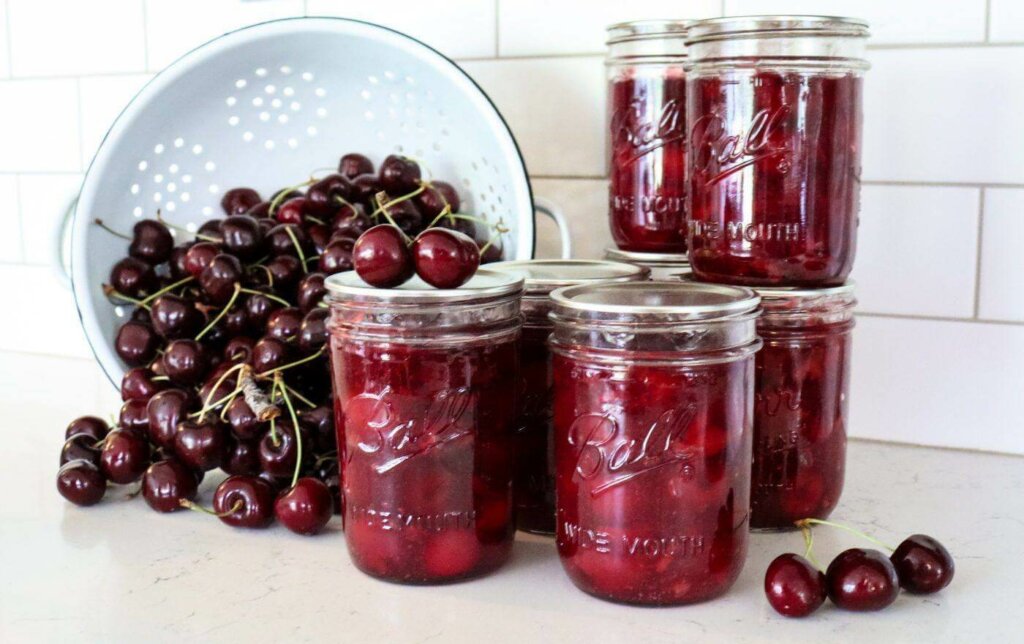
It's also important to consider how each fruit stores. Apples, for example, will store much longer in a root cellar than cherries. They also tend to ripen at different times.
Knowing when your fruit trees will be ripe is just as important as knowing how you're going to store or preserve the fruit from each tree.
Cherries, for example, ripen very quickly and have a pretty small harvest window before they start rotting and dropping from the tree.
If you're planning to plant cherry trees, you'll want to know how you're going to preserve the fruit to keep for long-term storage to avoid food waste (my favorites are my no-pectin cherry jam or my homemade cherry pie filling).
Berry Plants
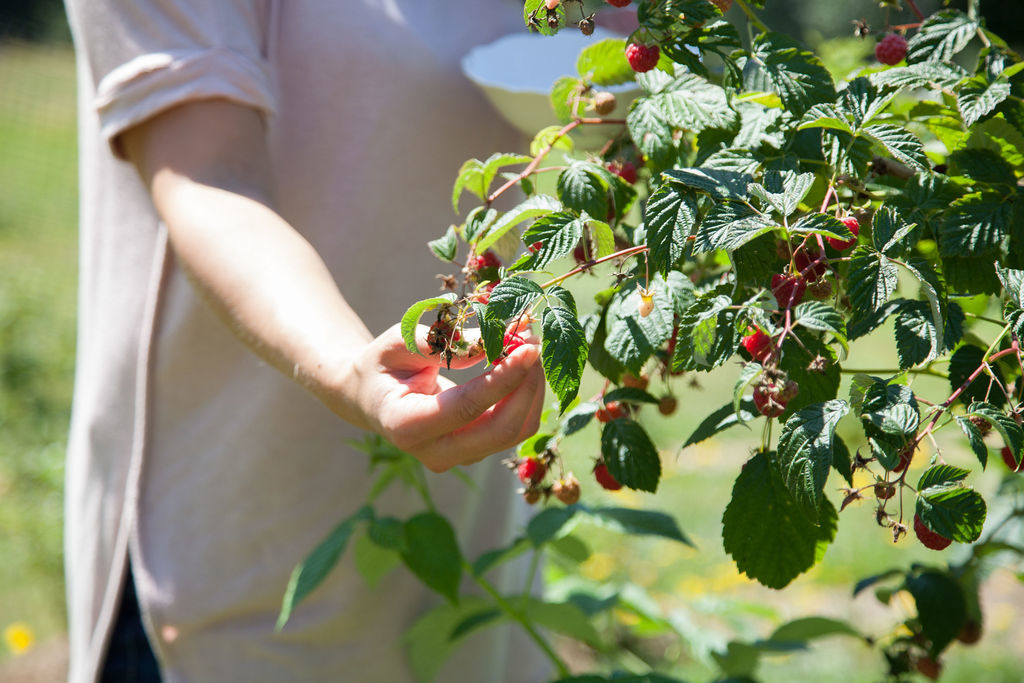
Now, let's talk about those berries and other fruit that everyone loves. When it comes to these types of fruit, you usually need one or more plants as the yield per plant is less than with fruit trees.
Blackberry
Very prolific! I think you get the most per plant from these than any other plant.
- Average Yield Per Plant: 35 to 70 cups
- Recommended Number Per Person: 2 to 4 plants
The majority of blackberry varieties will produce fruit the second year, but there are a few newer cultivators of blackberry that will produce fruit the FIRST year you plant them. They were developed by the University of Arkansas and are Prime-Jan' (‘APF-8') and ‘Prime-Jim' (‘APF-12'). They produce on both the first year canes (called primocanes) as well as the second year canes (called floricanes). Most other blackberries produce fruit on the floricanes (second-year canes) only.
Blueberry
- Average Yield Per Plant: 15 to 45 cups, depending on the maturity of the plant
- Recommended Number Per Person: 2 plants (you need two different varieties for cross-pollination for a good harvest yield)
What size pot/container is recommended for blueberries?
You want to pick a compact (half-high) variety. Half-high blueberries are a cross between northern high bush and low bush while being extremely cold hardy.
Container size should be a minimum of 20 inches deep (deeper is better) and 24 inches across. Blueberries are shallow-rooted so wider is better than deeper in choosing a container. Make sure it's something you can move into an unheated building, or shed, during the coldest months of the year.
Half-high blueberry varieties for containers
Bluegold
BrazelBerries Peach
Sorbet (‘ZF06-043’; U.S. Plant
Patent 23,325)
Chippewa
Northblue
Northcountry
Northland
Northsky
Perpetua
(U.S. Plant
Patent 24,209)
Polaris
Sunshine Blue
Top Hat
Elderberry
Usually, people aren't picking and then eating elderberries like you would fresh blackberries or blueberries. They're usually consumed in homemade elderberry syrup, jelly or jam or used for medicinal purposes.
- Average Yield Per Plant: 30 to 36 cups per mature plant
- Recommended Number Per Person: 1 plant
Grape
- Average Yield Per Vine (Plant): 10 to 30 cups
- Recommended Number Per Person: 1 vine (plant)
Raspberry
- Average Yield Per Cane (Plant): 1 to 2 quarts
- Recommended Number Per Person: 10 to 25 canes (plants)
Rhubarb
Similar to asparagus where you don't harvest from the plant the first year. It needs to get established really well. The following year, you can harvest a small amount. By the fourth or fifth year it'll be fully mature and you can harvest it for weeks on end throughout the late spring and into summer.
- Average Yield Per Crown (Plant): 6 cups
- Recommended Number Per Person: 2 to 3 crowns (plants)
Strawberry
Strawberries need to be replenished every three years because the original crown becomes exhausted. You can take runners from the original plant to replenish the older plants. How many strawberry plants per person:
- Average Yield Per Crown (Plant): 1 pint
- Recommended Number Per Person: 20 to 25 crowns (plants)
Get my full chart of how many fruits and vegetables to plant per person here for FREE
More Helpful Articles:
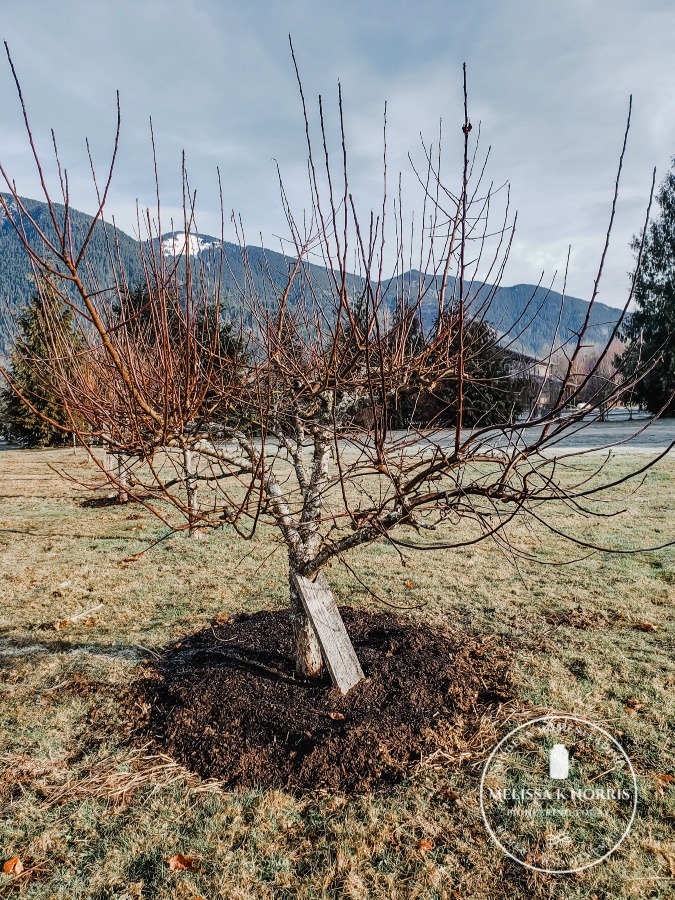
In podcast episode #169, I covered 5 Tips to Starting an Orchard and Growing Fruit. You'll want to check that out. There's nothing better than raising your own fruit and not having to buy it from the store which is why we're talking about how to figure out how much to plant for your family's needs. For more information on growing your own fruit, check out these articles as well.
- How to Prune a Blueberry Bush for a Larger Harvest
- How to Get Rid of Mummy Berry Disease on Blueberry Bushes
- How to Plant Raspberries – Soil Prep, Growing & Caring for your Raspberry Plants
- How to Prune Raspberries
- How to Prune Apple Trees
- How to Grow Elderberries
- Growing Elderberry from Cuttings
- 5 Tips to Starting an Orchard & Growing Fruit
- When and How to Plant Fruit Trees
- How to Treat Fruit Trees Organically: When to Spray for Disease
- How to Care for Fruit Trees In Fall & Winter
- Planting a Fruit Tree Guild
- Growing Fruit Trees in Pots
Grow more in your garden this year with my new book The Family Garden Plan: Grow a Year’s Worth of Sustainable and Healthy Food
Order the Family Garden Plan: Raise a Year’s Worth of Sustainable and Healthy Food and all the bonuses to grow your food here. You’ll learn cold frames and season extenders, composting, and so much more!
